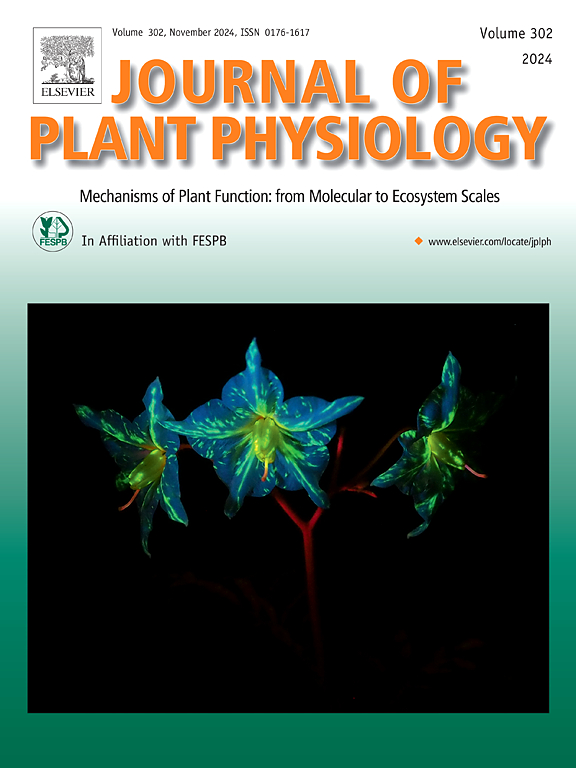植物内部生命的核磁共振成像(MRI)
IF 4.1
3区 生物学
Q1 PLANT SCIENCES
引用次数: 0
摘要
磁共振成像(MRI)是现代医学中应用最广泛的成像技术之一,但其不可思议的潜力在植物科学中仍未得到充分利用。植物内部生活的许多方面仍然是未知的,正在等待新的创新技术解决方案来发现。MRI无创探索生物体内部过程的能力为研究新陈代谢、营养分配、生长和发育提供了无与伦比的机会。以前所未有的方式使生物体复杂动态的可视化可以改变我们研究和感知植物的方式。这篇文章强调了为MRI成为植物研究的重要工具铺平道路的关键进展和策略,开辟了生物学和农业的新领域。本文章由计算机程序翻译,如有差异,请以英文原文为准。
The look insight – magnetic resonance imaging (MRI) of the inner life of plants
Magnetic resonance imaging (MRI) is one of the most versatile and widely used imaging techniques in modern medicine, but its incredible potential remains underutilized in plant science. Many aspects of the inner life of plants are still unknown and are waiting to be discovered by new innovative technological solutions. The ability of MRI to non-invasively explore processes inside living organisms offers an unparalleled opportunity to investigate metabolism, nutrient allocation, growth and development. Enabling the visualization of complex dynamics in living organisms in unprecedented ways could transform how we study and perceive plants. This article highlights the critical advancements and strategies that are paving the way for MRI to become an essential tool in plant research, unlocking new frontiers in biology and agriculture.
求助全文
通过发布文献求助,成功后即可免费获取论文全文。
去求助
来源期刊

Journal of plant physiology
生物-植物科学
CiteScore
7.20
自引率
4.70%
发文量
196
审稿时长
32 days
期刊介绍:
The Journal of Plant Physiology is a broad-spectrum journal that welcomes high-quality submissions in all major areas of plant physiology, including plant biochemistry, functional biotechnology, computational and synthetic plant biology, growth and development, photosynthesis and respiration, transport and translocation, plant-microbe interactions, biotic and abiotic stress. Studies are welcome at all levels of integration ranging from molecules and cells to organisms and their environments and are expected to use state-of-the-art methodologies. Pure gene expression studies are not within the focus of our journal. To be considered for publication, papers must significantly contribute to the mechanistic understanding of physiological processes, and not be merely descriptive, or confirmatory of previous results. We encourage the submission of papers that explore the physiology of non-model as well as accepted model species and those that bridge basic and applied research. For instance, studies on agricultural plants that show new physiological mechanisms to improve agricultural efficiency are welcome. Studies performed under uncontrolled situations (e.g. field conditions) not providing mechanistic insight will not be considered for publication.
The Journal of Plant Physiology publishes several types of articles: Original Research Articles, Reviews, Perspectives Articles, and Short Communications. Reviews and Perspectives will be solicited by the Editors; unsolicited reviews are also welcome but only from authors with a strong track record in the field of the review. Original research papers comprise the majority of published contributions.
 求助内容:
求助内容: 应助结果提醒方式:
应助结果提醒方式:


